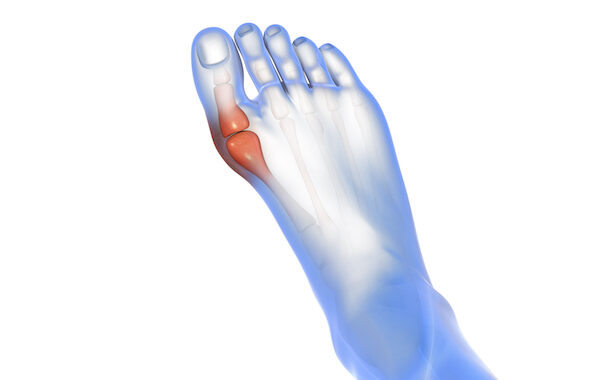Bunions (hallux valgus) can be excruciatingly painful. They not only create a great deal of discomfort, but they also make it difficult to perform day-to-day tasks. Luckily, there are some lifestyle changes and exercises that can help alleviate the pain.
Whether you are experiencing bunion pain or trying to prevent developing one, these exercises can help keep your feet healthy:
- Toe Points and Curls: This exercise strengthens your toe joints by flexing the muscles in your feet. Sit down with your feet 6 inches above the ground. Slowly point and curl your toes. Do 2-3 sets of 20 reps.
- Toe Spread-Outs: Place your foot on the ground while sitting. Lift and spread your toes while keeping your heel on the floor. Repeat this exercise on each foot about 10 to 20 times.
- Toe Circles: This exercise helps mobilize the joints in your toes and alleviate stiffness. Lean over and grip your hallux or the big toe while sitting on a chair. Start by circling the toe 20 times clockwise and then 20 times counterclockwise. Do 2-3 sets on each toe.
- Assisted Toe Abduction with Resistance Band: Wrap a resistance band around your big toes. Pull both big toes away from the other toes while holding the band tightly. Hold for 5 seconds when fully stretched, then release and repeat for 20 reps.
- Ball Roll: Place your foot on top of a tennis or lacrosse ball on the floor. Roll the ball back and forth and side to side with your foot. Even if the bunion is just on one foot, repeat this motion for 3-5 minutes on each foot.
- Towel Grip and Pull: Spread out a small towel or washcloth on the floor. Sit down and bring the towel towards you with your toes. Scrunch the towel only with your toes. Do this for up to 5 minutes.
- Marble Pickup: You will need a bowl and 10-20 marbles for this exercise. Put the marbles on the floor and the bowl nearby. Place your feet close to the ground and sit on a hard surface. Pick up each marble with your toes and place it in the bowl. Make sure you keep your toes wrapped around the marble.
- Figure Eight Rotation: This exercise is similar to toe circles, except instead of a circle, you will move your toe in figure eight (8) motion. This increases flexibility and range of motion. Do 2-3 sets of 10 reps on each toe.
- Barefoot Beach Walking: If you live right on the coast, try this exercise by walking barefoot in the sand. It will feel like you are getting a foot massage while also strengthening your feet and toes muscles.
- Heel Raise: Place your foot flat on the floor while sitting. Lift your heel and shift your weight to the outside of your ball of the foot. Hold for 5 seconds. Repeat on each foot ten times.
At-Home Bunions Treatments
- Over-the-counter (OTC) pain medication: For many patients, the first line of defense is using a nonsteroidal anti-inflammatory drug (NSAID) such as ibuprofen, which also helps control pain.
- Wear well-fitting shoes: Proper footwear, shoes that fit correctly, are wide in the toe area, and have a low heel, can also help relieve bunion pain.
- Protect the injured area: You can buy foot sleeves with cushy gel pads to cover the bunion to prevent rubbing and irritation.
- Shoe inserts: Padded shoe inserts can help disperse pressure when walking and keep your bunion from worsening.
- Cold therapy: Icing the affected area can help ease discomfort if you have been on your feet a long time or have irritation and inflammation of the bunion.
- Soaking therapy: Soak your feet in Epsom salt (magnesium sulfate) with warm water to reduce pain and inflammation.
When to See a Doctor?
If home remedies are not providing you any relief, it is time to consult a doctor. They can advise you on whether surgery is a viable option, particularly if nonsurgical treatments are ineffective. The primary objective of surgery, whether it be bunionectomy, osteotomy, or arthrodesis, is to alleviate pain and discomfort.
A bunion will affect up to 64 million people. If you belong to this group, you know how important it is to find ways to relieve pain and possibly keep future bunions away.
Visit the FootDocStore.com blog for more information on how to keep your feet and ankles healthy.

